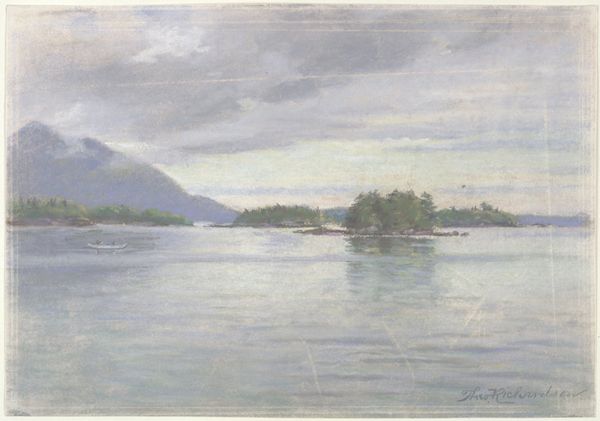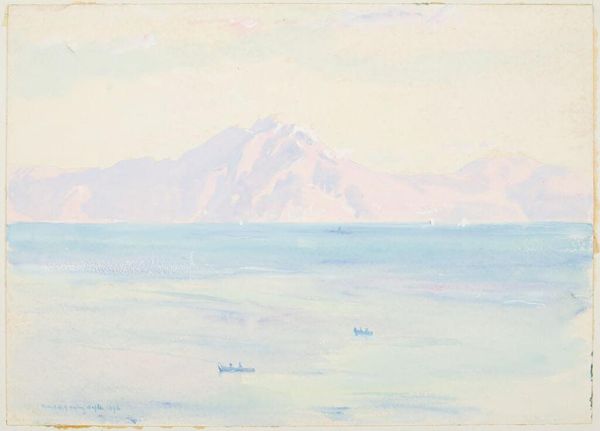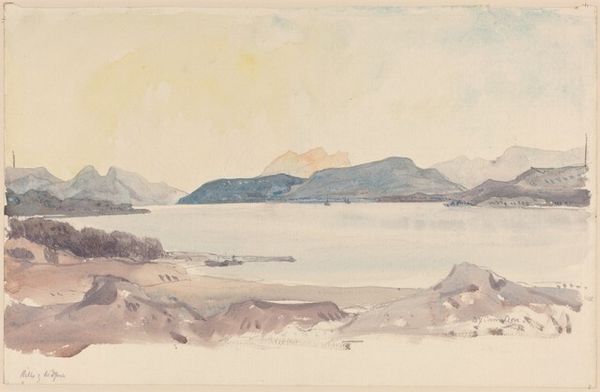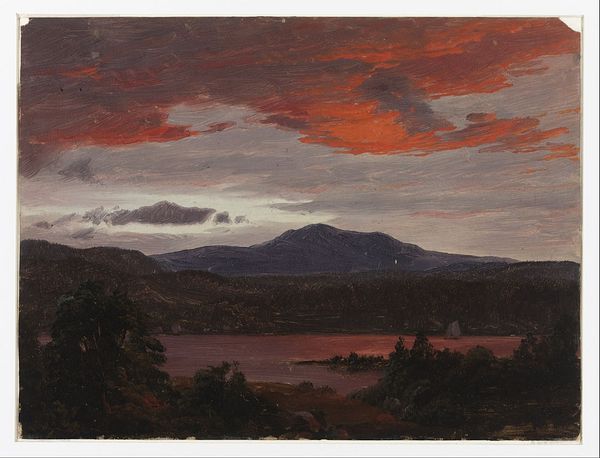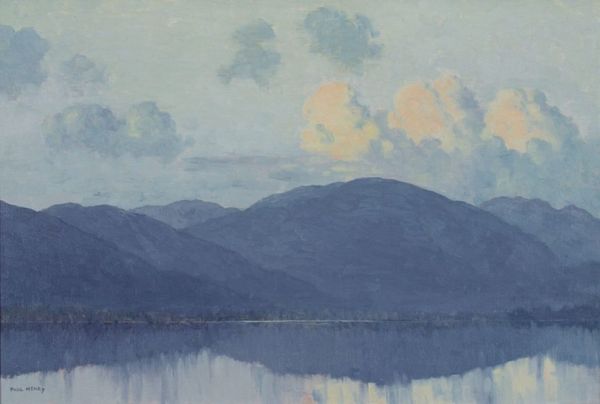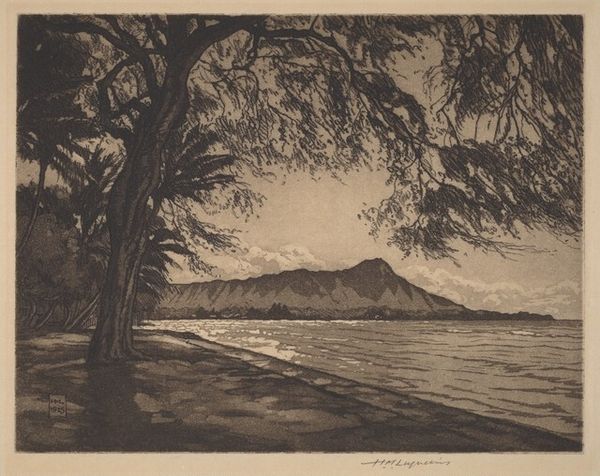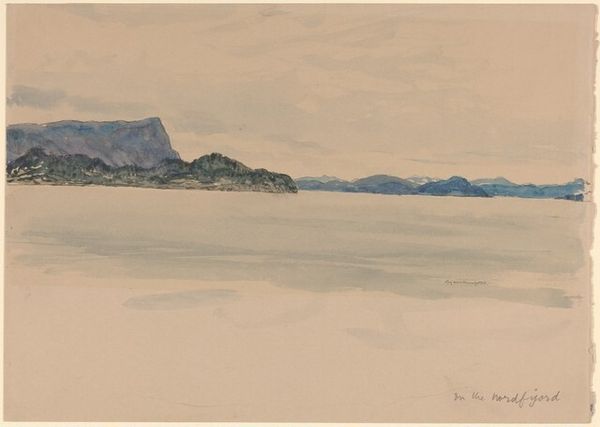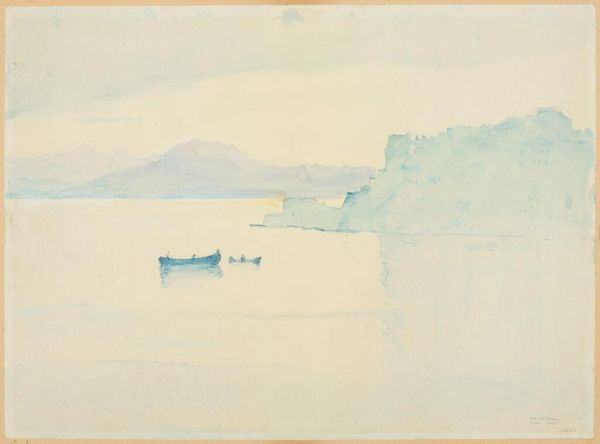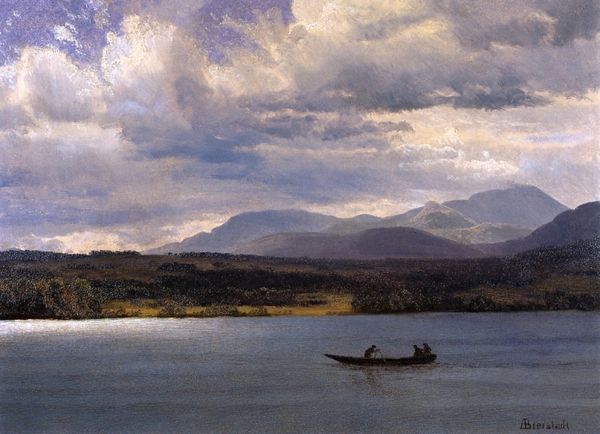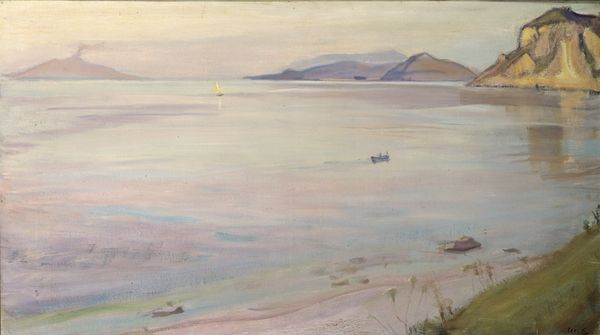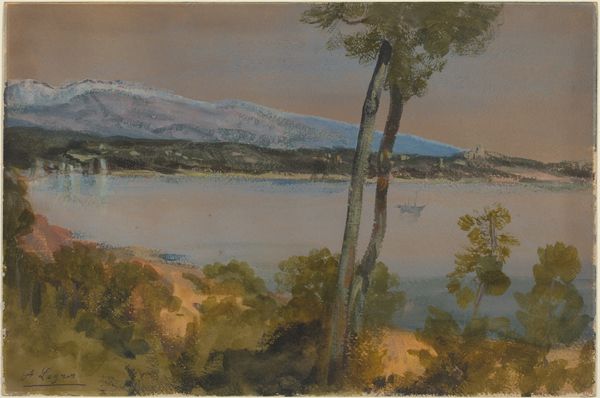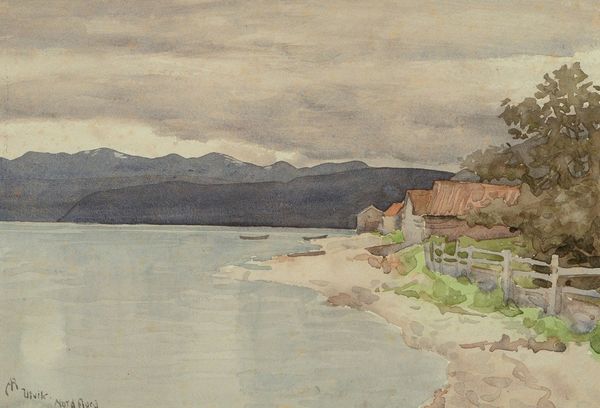
Copyright: Public domain
Curator: Frederic Edwin Church’s "Mount Katahdin from Lake Millinocket," painted in 1878, offers a striking view. The location is Maine, and he's rendered it in watercolor and oil on paper. What’s your initial impression? Editor: The composition immediately strikes me as serene, almost ethereal. There’s a stillness to the water and a gentle light bathing the mountain that evokes a sense of quiet awe. The chromatic values seem quite muted, reinforcing this calm, restful sensibility. Curator: I concur on the painting’s formal structure supporting a calm sensibility. Notice Church's use of layering and subtle tonal variations, the way the atmospheric perspective renders Katahdin in almost ghostly terms. He is clearly interested in manipulating visual perspective using a romantic, almost symbolic approach to the pictorial surface. Editor: Yes, that spectral effect absolutely links to Church’s broader role in cultivating a taste for landscape as sublime national allegory. After the Civil War, paintings of unspoiled wilderness performed ideological work. Promoting nature becomes a symbol of a country being reformed, revitalized. Church explicitly invites a comparison between the "sublime" in nature and an exceptional, if somewhat invented, national identity. Curator: He uses luminist strategies for the symbolic dimensions, doesn’t he? Take, for instance, the hazy sunlight and precise linear elements. Light itself becomes the subject. Consider the composition— the horizon, the shape of Katahdin, the color temperatures of foreground and background all contributing to an internal harmony, a stable pictorial unity and thus supporting the symbolic reading you outline. Editor: Church's commercial strategy further reveals how American Romanticism supported expansionist imperatives. Prints after paintings like these were widely circulated, attracting tourists, settlers, and industry to places like Maine. Manifest Destiny manifests again! Curator: An insightful socio-economic assessment to augment the image’s formal construction, and, moreover, its atmospheric manipulation, which points us toward understanding its continued appeal in contemporary aesthetic regimes. Editor: Well, I'm grateful for this opportunity to connect these dots together!
Comments
No comments
Be the first to comment and join the conversation on the ultimate creative platform.
